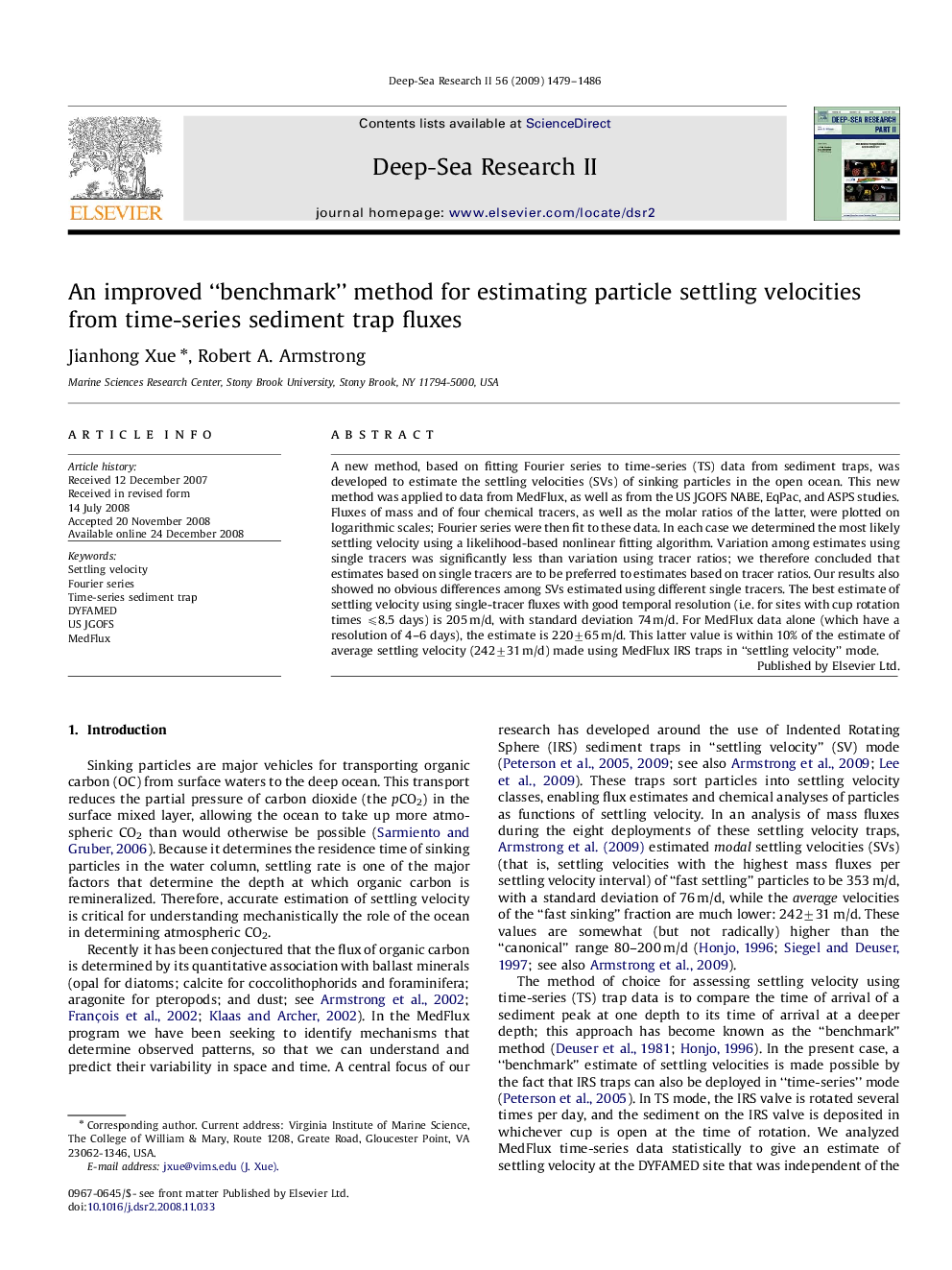| کد مقاله | کد نشریه | سال انتشار | مقاله انگلیسی | نسخه تمام متن |
|---|---|---|---|---|
| 4537375 | 1326366 | 2009 | 8 صفحه PDF | دانلود رایگان |

A new method, based on fitting Fourier series to time-series (TS) data from sediment traps, was developed to estimate the settling velocities (SVs) of sinking particles in the open ocean. This new method was applied to data from MedFlux, as well as from the US JGOFS NABE, EqPac, and ASPS studies. Fluxes of mass and of four chemical tracers, as well as the molar ratios of the latter, were plotted on logarithmic scales; Fourier series were then fit to these data. In each case we determined the most likely settling velocity using a likelihood-based nonlinear fitting algorithm. Variation among estimates using single tracers was significantly less than variation using tracer ratios; we therefore concluded that estimates based on single tracers are to be preferred to estimates based on tracer ratios. Our results also showed no obvious differences among SVs estimated using different single tracers. The best estimate of settling velocity using single-tracer fluxes with good temporal resolution (i.e. for sites with cup rotation times ⩽8.5 days) is 205 m/d, with standard deviation 74 m/d. For MedFlux data alone (which have a resolution of 4–6 days), the estimate is 220±65 m/d. This latter value is within 10% of the estimate of average settling velocity (242±31 m/d) made using MedFlux IRS traps in “settling velocity” mode.
Journal: Deep Sea Research Part II: Topical Studies in Oceanography - Volume 56, Issue 18, 15 August 2009, Pages 1479–1486